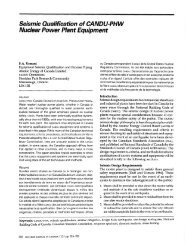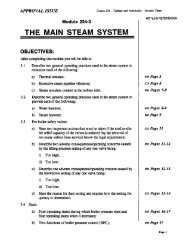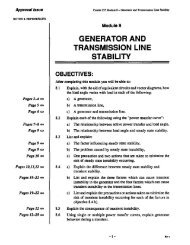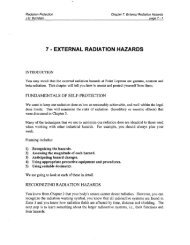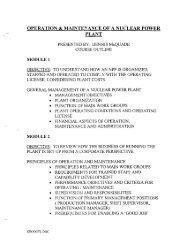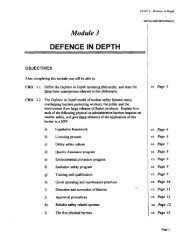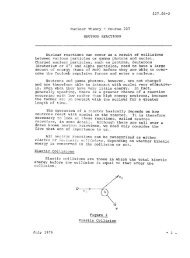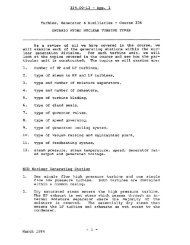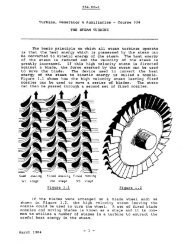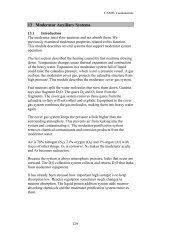Reactor Control Systems of Qinshan Phase III CANDU ... - canteach
Reactor Control Systems of Qinshan Phase III CANDU ... - canteach
Reactor Control Systems of Qinshan Phase III CANDU ... - canteach
You also want an ePaper? Increase the reach of your titles
YUMPU automatically turns print PDFs into web optimized ePapers that Google loves.
) it calculates the reactor setpoint, and the effective power error that is used for driving<br />
the<br />
c) reactivity control devices,<br />
d) it automatically adds poison to the moderator if required.<br />
The source <strong>of</strong> the reactor power request depends upon the selected operating mode.<br />
In the Normal mode, where the reactor follows the turbine, the request comes from the<br />
steam generator pressure control program. Maneuvering rate limits are built into the<br />
demand power routine. The maximum power maneuvering rate requested is 1% FP per<br />
second above 25% FP and those below 25% FP are:<br />
%FP NORMAL Mode ALTERNATE Mode<br />
10 - 25 4% present power per second 4% present power per second<br />
< 10 1% present power per second 4% present power per second<br />
In the Alternate mode, where the turbine follows the reactor, the requested power is set<br />
by the operator who also selects the maneuvering rate. This mode is used on plant upsets<br />
or at low power when the steam generator pressure is insensitive to reactor power.<br />
During reactor setback, the demand power routine receives a negative maneuvering rate<br />
from the setback routine. Should the reactor be already reducing power at a greater rate,<br />
the setback rate is ignored; otherwise the setpoint is ramped down at the setback rate.<br />
The plant will be switched to Alternate Mode when the setback clears.<br />
The effective power error is calculated as a weighted sum <strong>of</strong> (a) the difference between the<br />
calibrated log power and reactor demanded log power setpoint and (b) the difference<br />
between the lograte and demanded maneuvering rate. If the effective power error exceeds<br />
10% for at least two seconds and the rate <strong>of</strong> power increase is positive, the demand<br />
power routine adds gadolinium poison to the moderator at the rate <strong>of</strong> 0.75 milli-k/minute.<br />
This automatic addition <strong>of</strong> poison prevents loss <strong>of</strong> regulation due to slow growth <strong>of</strong><br />
unforeseen reactivity excess in the core and also that resulting from a decreased reactivity<br />
load due to the decay <strong>of</strong> xenon when the plant has been shutdown for extended periods.<br />
The operator has the option <strong>of</strong> overriding this automatic poison addition.<br />
A deviation limiter prevents the power setpoint from exceeding 1.05 times the actual<br />
power to prevent power increases at large rates.<br />
Reactivity <strong>Control</strong> and Flux Shaping<br />
The functions <strong>of</strong> reactivity control and flux shaping are performed by the light water zone<br />
control absorbers, the adjusters and the mechanical control absorbers.<br />
CJNPE_paper990401<br />
11/21/05<br />
9




